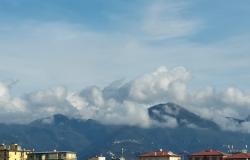Wild Umbria: The Parks of Monte Peglia and Monte Cucco
ITA:

If hiking is your thing, you’ll find plenty of options in Umbria, the ‘green heart of Italy’.
Take for example the Park of Monte Peglia and Selva di Meana: this is an area whose landscape has remained pretty much unaltered, with vast wooded areas rich in biodiversity, and a great variety of flora to be admired. The flowering of orchids in the Selva di Meana during April and May, with approximately 40 wild species, is a natural show not to be missed.
The Park of Monte Peglia is dotted with picturesque villages, such as Allerona; surrounded by woods of beech, holm oak and juniper trees, it grew around the Castle of Lerona, which today has preserved the Door of the Sun and of the Moon.
Another park that won’t fail to please nature lovers is Monte Cucco, a spectacular environment where you’ll find underground waters and mineral sources, beech forests, karst caves and noteworthy species of animals, such as wolves and golden eagles.
Here, too, there are interesting villages to visit, such as Coldipeccio, best known for the breathtaking view over the so-called ‘Valley of Prisons’; from here, proceed to “Devil's shoe”, and on to the village of Pascelupo.
The best area to spot wildlife is Scheggia, where you’ll also find the paleontological site of Valdorbia, an important site for researchers of the Jurassic period.
Umbria is also very much connected to the spiritual, and in the Monte Cucco area you’ll find monasteries and abbeys, set in peaceful locations amid large expanses of flowers. It is here that the Amanuensis transcribed ancient texts and books.
Best thing of all? The chance to refuel tasting Umbria’s delicious cuisine. Truffle tagliatelle, anyone?
Se ti piace praticare l’escursionismo, troverai moltissime opportunità in Umbria, il 'cuore verde d'Italia'.
Prendiamo ad esempio il Parco del Monte Peglia e Selva di Meana: si tratta di un'area il cui paesaggio è rimasto pressoché inalterato, con vaste aree boschive ricche di biodiversità, e una grande varietà di flora da ammirare. La fioritura di orchidee nella Selva di Meana nei mesi di aprile e maggio, con circa 40 specie selvatiche, è uno spettacolo naturale da non perdere.
Il Parco del Monte Peglia è punteggiato da pittoreschi villaggi, come Allerona; circondato da boschi di faggi, lecci e ginepri, si è sviluppato intorno al Castello di Lerona, che oggi ha conservato la Porta del Sole e della Luna.
Un altro parco che non mancherà di soddisfare gli amanti della natura è il Monte Cucco, un ambiente spettacolare dove si trovano acque sotterranee e fonti minerali, boschi di faggio, grotte carsiche e specie notevoli di animali, come il lupo e l'aquila reale.
Anche qui, ci sono villaggi interessanti da visitare, come Coldipeccio, meglio conosciuto per la vista mozzafiato sulla cosiddetta 'Valle delle Prigioni'; da qui, si può continuare per la "Scarpa del Diavolo", fino al villaggio di Pascelupo.
L'area migliore per avvistare la fauna selvatica è Scheggia, dove troverai anche il sito paleontologico di Valdorbia, un sito importante per i ricercatori del Giurassico.
L'Umbria è anche spiritualità, e nella zona del Monte Cucco troverai monasteri e abbazie, situati in località tranquille tra grandi distese di fiori. E' qui che gli amanuensi trascrivevano testi e libri antichi.
La cosa migliore di tutte? La possibilità di rifocillarsi degustando la deliziosa cucina umbra. Qualcuno ha detto tagliatelle al tartufo?











